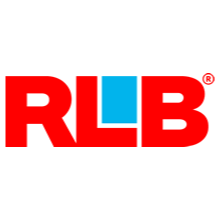
RLB PACKAGING
How Verde’s HAL extensions delivered advanced supply chain automation

While a good enterprise resource planning solution directly addresses many of the administrative tasks faced by any business, there remain unique problems which are often solved using time-consuming manual workarounds. Faced with just such a challenge in its purchasing department, RLB Packaging looked to Verde Group for a solution. With the implementation of its HAL Extensions, the company has solved a complex issue with back orders, releasing purchasing professionals from tedious work, improving supply chain efficiency and optimising stock holding for better working capital allocation.
With locations in Auckland and Christchurch, RLB Packaging is one of New Zealand’s leading packaging and strapping suppliers. As specialists in steel, PET and composite strapping, RLB constantly improves its products, service and pricing. The company is committed to providing customers with expertise, innovation, unique packaging and strapping solutions, and safety products across all industry sectors. Family owned and operated, the company has traded for close to 100 years and prides itself on people and relationships with our customers.
SITUATION
Steve Hazard, Finance and Operations Manager, explains that RLB Packaging’s purchasing department runs a large proportion of its business on back-orders. “That’s the nature of a lot of the products we supply; some are held in stock, others are custom designed solutions, and yet others are ‘Just in Time’ with short lead times. We don’t stock these products, but get them from our suppliers on an ‘order today, receive tomorrow’ basis.”
In fact, up to 80 percent of the products which RLB provides are supplied on this basis. “However, the problem is that these ‘non stocked’ items would create a major administrative overhead which was necessary to make sure customers would receive the packaging required, when they needed it. Running the back-order report manually twice a day would result in identification of line items, the manual creation of Purchase Orders (PO) which would be sent to suppliers for fulfilment. “This was time-consuming and frankly, a painful process,” Hazard confirms.
SOLUTION
Relying as it does on the MYOB Greentree Enterprise Resource Planning solution, he says the company discussed the back-order challenge with its support partner, Verde. It suggested its HAL Extensions for MYOB Greentree.
HAL is designed to provide a just in time purchasing and fulfilment system for branches. It is highly configurable and employs complex forecast modelling. With HAL, back-orders are automatically turned into POs, linking sales and purchase orders. The extensions provide PO estimated time of arrival and status tracking, especially for long lead-time overseas orders, with automated updating and notification to the purchasing team when estimated times of delivery move outside set tolerances.
The system automates stock reordering and Location Transfer Requests (LTRs), which Hazard says is a ‘phase two’ implementation of HAL on which RLB is presently fine tuning.
The automation of back order to purchase order was the main driver behind the HAL project, Hazard explains. “When a product goes on back order, a PO is automatically generated against the preferred supplier. If a PO has already been raised for that supplier but has not yet been sent, it will add the new product to the existing PO. If below the supplier’s minimum order, the PO is flagged until threshold is reached, or overridden by the purchasing team.”
If it sounds complex, it is, Hazard relates. “The nature of this implementation with multiple business rules and multiple configurations required meant we went about the project on an ‘on the fly’ basis. The principles were straightforward, but it was necessary to work on it as we went with constant tweaking and playing around with it over the course of a year as things popped up which had to be addressed.”
But ultimately, he says, the solution is working so well on the back orders that RLB is well into phase two.

RESULTS
With the system bedded in and tweaked to suit, Hazard says the main and most obvious benefit is a more visible, more automated supply chain, where purchasing specialists are alerted by the system to exceptions, rather than having to manually check and process back-orders. “If something is on a back-order, it has a window of an hour ahead of cut-off times for suppliers. As the sales orders get processed, the system automatically generates a purchase order and adds to it, before triggering that order within that window if the right volumes are reached to meet minimum order quantities for the particular supplier.”
Importantly, he says purchase officers can still manually intervene, while the system also pops up alerts for any exceptions which might require a human decision.
What the system equates to, in simple terms, is the automation of a lot of pernickety work which was previously manual. “HAL encompasses and operates off a lot of complex business rules, which matches the nature of the products we supply. So, for example, if we have a product on which the lead time for delivery averages three days, it knows that and updates MYOB Greentree; when the PO is generated, it uses today’s date plus 3 days for expected delivery.”
Other, slower moving items like customised packaging solutions which can take a month or more for delivery, will alert purchasing officers and continue to prompt to check for updates. “That helps people remember what is underway and supports them in managing more complex orders so we can deliver to our customer’s expectations,” Hazard notes.
The value of the HAL extensions can be explained in simple terms, too. “It is a huge time saver and it means we’ve been able to keep our team pretty lean. We’d probably have at least two people doing what one does. The work that HAL has taken over was really unpleasant, so it also means our people can focus their attention on adding real value, rather than doing laborious manual stuff like digging through 20 pages of back orders and creating manual purchase orders.”
He says the company is so happy with the implementation of the HAL extensions that it kicked off a second phase, which is targeted at managing warehouse inventory levels. Again, complexity comes from the variances in demand profiles and the ‘speed’ at which some products move, compared with others. Here, HAL is being applied to automate stock reorders with the view to optimise stock holding in a Just in Time supply chain – while also avoiding stock outs. It encompasses interbranch transfers, with the extensions checking across both the Auckland and Christchurch warehouses for in stock items, before automatically generating POs to suppliers or interbranch transfers.
“This is already working pretty well, but there is ongoing work to iron it out,” Hazard says. “Already, we’ve seen an improvement on working capital; we probably have 80 to 90 percent of our stock items being managed successfully by HAL.”
Phase 2 of HAL has been in place and largely bedded down, with the next part of the exercise to analyse the database to assess and quantify the benefits created in terms of stock holding reductions and avoiding stock-outs.
Hazard says Verde has proven an indispensable asset in the implementation of the complex HAL extensions, which are driving a sophisticated supply chain with a high degree of automation. “This is a tricky thing to achieve, but it has been successful. My recommendation, however, to anyone looking for this sort of engagement is to identify someone internally to own and drive it – it requires a hands-on person for best results.”
ABOUT RLB PACKAGING
The Wilcox Group of Companies is involved with growing, packing and distributing fresh produce throughout New Zealand with facilities at Pukekohe, Ohakune, Levin and the Waikato in the North Island, and Rakaia in the South Island. Companies within the group are privately owned by the Wilcox family, who have been associated with vegetable growing since the early 1930s. They manage a production base of 2,500 acres with 110 permanent staff.Their large growing and packing capacity and specialised marketing skills mean Wilcox can deliver and maintain a guaranteed sustainable supply to retail sectors throughout New Zealand and sustain a significant export demand.
For more information visit A.S. Wilcox
With locations in Auckland and Christchurch, RLB Packaging is one of New Zealand’s leading packaging and strapping suppliers. As specialists in steel, PET and composite strapping, RLB constantly improves its products, service and pricing. The company is committed to providing customers with expertise, innovation, unique packaging and strapping solutions, and safety products across all industry sectors. Family owned and operated, the company has traded for close to 100 years and prides itself on people and relationships with their customers.
For more information visit RLB Packaging

